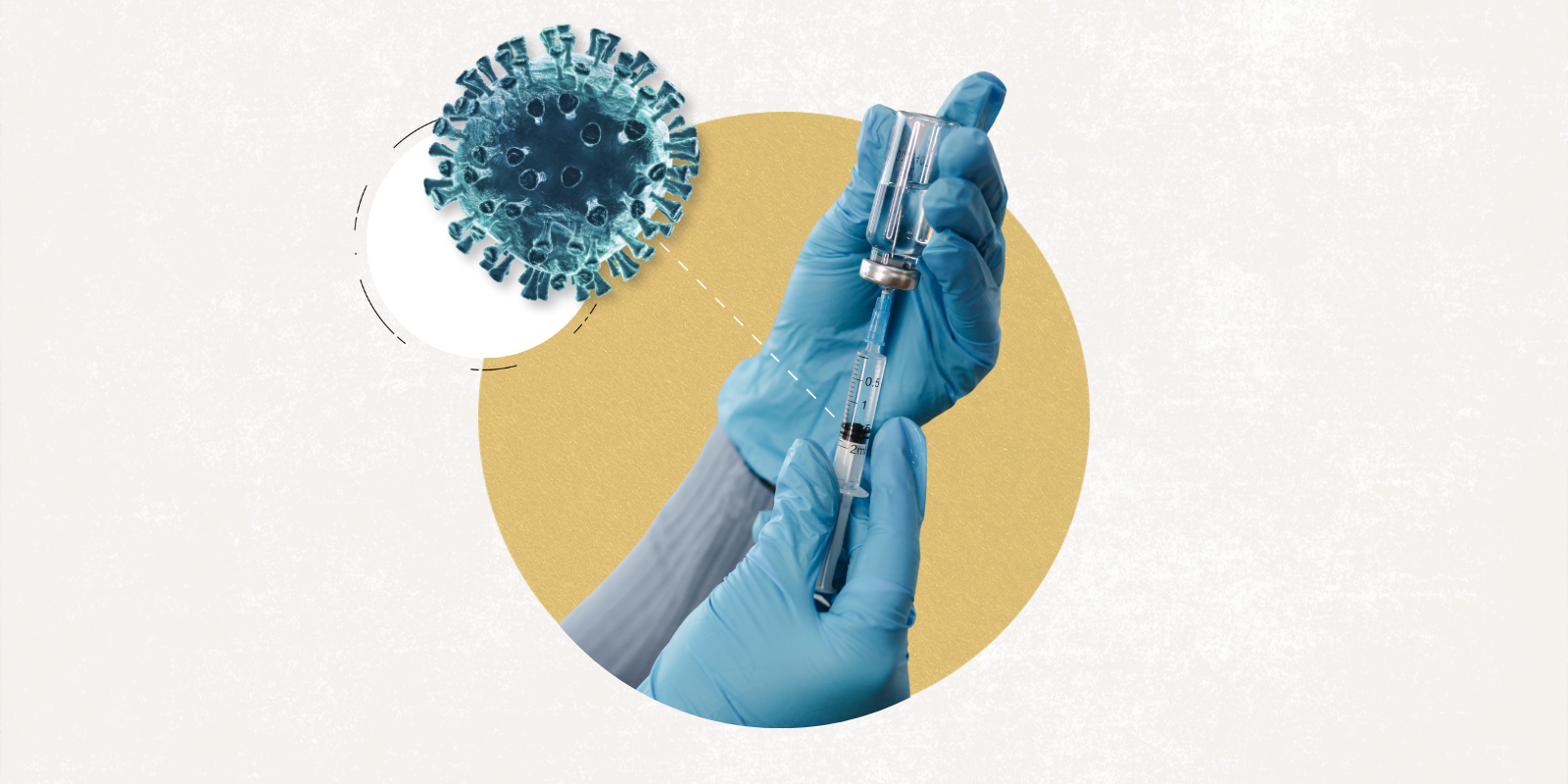If any of the 86% of Americans lacking a current bivalent booster took a shot on the omicron-targeting vaccine right now, their chances of being sick with COVID-19 on Christmas Day would fall by as much as half.
That’s according to the first real-world study on vaccine effectiveness recently released by the Centers for Disease Control and Prevention (CDC) that looked at the data of 360,626 people who received COVID-19 tests between Sept. 14 and Nov. 11.
On Dec. 9, the CDC expanded the use of the updated (bivalent)
COVID-19 vaccines for children ages 6 months through 5 years.
The study follows earlier reports by mRNA bivalent booster manufacturers Pfizer and Moderna that clinical data found superior immune response against the BA.4/5 omicron variants from the new vaccine compared to the original version.
“A two-fold benefit in terms of preventing infection sounds pretty good to me,” said Ross Kedl, PhD, a vaccine expert and professor of Immunology & Microbiology at the University of Colorado School of Medicine. “If somebody told me I had a chance of doubling my investment, I’d be down with that,” Kedl said.
|
What does the holiday picture look like? With the holidays around the corner, Ross Kedl, PhD, professor of immunology and microbiology, said he can almost guarantee a rise in illnesses, from flu to COVID.
“Respiratory viruses always go up the more people gather around each other.” But whether predictions of a COVID surge are likely, he’s doubtful, as broader immunity continues to rise, Kedl said.
Past studies have found immunity from vaccination and infection, or hybrid immunity, superior in terms of protection and durability, Kedl said.
“And the degree that hybrid immunity is protecting people is pretty high,” he said, noting that many people have now been infected, especially during the omicron surge.
Nonetheless, staying current on boosters can offer further protection, he said.
“Everybody has tools at their disposal and should be thoughtful about navigating their own risk and their risk to loved ones and other people around them.” |
Given that vaccines reach their full protection at about two weeks post-injection, Kedl suggests that people wanting peak protection during the holidays get vaccinated soon.
While experts hope the new data inspire more booster uptake, particularly among the high-risk 65 and older age group, they recognize that changing factors are influencing the low response (about 13% of citizens nationwide and 22% in Colorado have opted for the booster).
Kedl and Thomas Campbell, MD, a professor of infectious diseases who led earlier COVID vaccine clinical trials at the CU Anschutz Medical Campus, address some of those issues along with findings from the CDC study.
#1 Booster gets nod despite lack of human data
For the first time since the initial COVID vaccine rollout, health officials granted emergency use authorization on Sept. 1 for the current booster without human data, a move that raised eyebrows and likely slowed uptake.
Officials hoped approval of the first redesigned vaccine combining the original virus for broader protection and the then-predominant BA.4/5 variants would help ward off a winter surge. Campbell was one of many health experts who questioned a massive vaccine campaign without human data, particularly as COVID rates were low and had been for some time.
“What’s happened since then is that COVID rates have started to come back up, so the risk of COVID is greater now than it was then, and we are getting these emerging data about the effectiveness of the updated vaccine,” Campbell said.
Emphasizing that more data are still needed, Campbell said the situation supports getting the vaccine, particularly with respiratory virus season in full swing and flu and RSV (respiratory syncytial virus) already inundating hospitals.
#2 Vaccine fatigue and the power of waiting
Vaccine fatigue also likely plays a role in low uptake rates, Kedl said. For those simply procrastinating, the delay could prove beneficial.
In the CDC study, adults 18 to 49 who had gotten bivalent boosters were 43% less likely to get sick with a COVID-19 infection than their un-boosted counterparts. That protective rate jumped to 56% for that age group if eight months had passed since a previous COVID vaccine.
For Kedl, the data are not completely surprising. During the first weeks after immunization or infection, immunity peaks, he said. “If you administer a vaccine during that time, mostly what happens is your existing immunity just neutralizes the vaccine.”
Did you know?
In a recent study, infection protection rates
for adults 18 to 49 who had bivalent boosters
jumped from 43% to 56% if the person’s last
vaccination was eight months ago or longer.
In the CDC study, the protective rates fell with age, as older people tend to have weaker immune function, boosting protection against infection by 28% for ages 50 to 64 and 22% for people 65 and older. But, again, the rates climbed significantly for those with an eight-month or longer window since their last shot, rising to 48% for ages 50 to 64 and 43% for adults over 65.
People should continue to heed that data and wait to be boosted at least 90 days from both a prior vaccination and a previous SARS-CoV-2 infection, Kedl said. “And if you can safely wait longer, yes, those data are a decent motivation,” he said, keeping in mind that such a wait could be dangerous for people susceptible to severe disease, a risk that increases with age.
#3 As immunity grows, vaccine interest fades
Estimates of Americans who have had COVID since China first reported emergence of an “odd pneumonia-like” illness three years ago this month range from 40% to 60%. But between infections and vaccinations, population immunity likely exceeds 80%, experts predict.
“Omicron really swept through,” Kedl said of the most transmissible variant yet, which emerged in the United States just in time for Christmas one year ago and has spun off a number of strains. “Most of us got some version of omicron somewhere between BA.1 and BA.4/5,” he said. “And that actually is going to provide good protection,” he said of another factor likely playing a role in nonexistent booster lines.
Couple that natural immunity with the growing immunity for the population that stayed up-to-date on boosters, and many people are extra protected, he said. “Broadly speaking, the more often you get boosted, the more durable your immunity becomes.”
“Natural immunity does provide added protection,” Campbell said. “But the vaccines augment our natural immunity to these respiratory viruses,” he said, adding that people infected with a variant before omicron are less protected than those who fell ill during the omicron surge.
#4 Rapid evolution raises skepticism
The rapid pace and tremendous jumps in SARS-CoV-2 evolution in the past three years can also make people question the sensibility of getting a variant-specific vaccine. From alpha to delta to omicron, the virus has changed immensely in its attempts to outwit the vaccines and the body’s natural immunity. Omicron had a head-turning 32 mutations to the previous variant’s vaccine-targeting spike protein.
However, evolution has slowed since then, with omicron holding out as the top circulating variant since it rapidly pushed out its competitors last winter.
Top Three Circulating Omicron Variants
BQ.1.1: 38.4%
BQ.1: 30.7%
BA.5: 10.0%
And although the BA.4/5 strains targeted in the bivalent vaccine are receding and other strains are gaining ground, the new strains are all direct omicron descendants, Campbell said. Moreover, the new strains are exhibiting only two or three differences from BA.5, suggesting that the vaccines should offer some protection, Campbell said.
While not conclusive, the recent CDC study supported that notion, noting the newer omicron strains (BQ.1 and BQ.1.1) began circulating during the study period but did not change vaccine effectiveness rates, according to Kedl. He said he’s hopeful omicron’s patterns could suggest slower variant spinoffs in the future, potentially requiring boosters only every two years.



.png)

